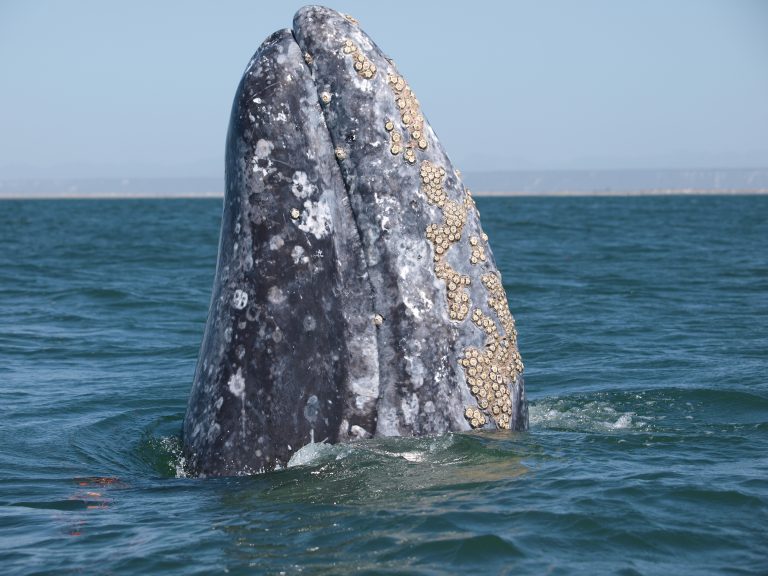Species Spotlight
Gray whales begin their return to Alaska each March. After wintering in their breeding grounds along Mexico’s Baja Peninsula, they swim alongside Alaska’s outer coast on their way to the Chukchi and Beaufort seas. In late March, they are often seen near coastal communities including Sitka and Seward.
Gray whales roll onto their sides to stir up sediments on the ocean floor, which they then filter through their baleen to trap the small invertebrates that comprise the bulk of their diets. Each summer they eat enough to build fat reserves that last them through the winter months when they typically do not feed.
Alaska’s gray whales were hunted nearly to extinction by 1900 but had recently rebounded to about 26,000 animals. However, since 2019 NOAA Fisheries has tracked an “unusual mortality event” involving the deaths of potentially thousands of gray whales. Surveys in 2022 showed low birth rates and a nearly 40% population decline. Over 100 gray whales have washed up on Alaskan shores in recent years, sometimes in emaciated condition. Biologists say possible causes include ocean changes associated with climate change, and natural population dynamics.



Comments are closed.